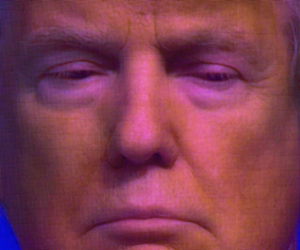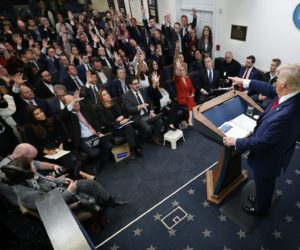Nicholas Kristof starts a very interesting column in today’s New York Times with the question:
A quiz: If a person who speaks three languages is trilingual, and one who speaks four languages is quadrilingual, what is someone called who speaks no foreign languages at all?
Before I give you the answer, an observation.
I noticed that my spellchecker flagged “quadrilingual” in Kristof’s question and gave “No Spelling Suggestions,” so I tried “quintlingual,” “quintilingual” and “pentalingual” and got similar results. Evidently we should call anyone who speaks more than three languages, multilingual.
Fair enough.
Now Kristof’s answer to the question: “An American.”
Not fair enough, although I know that Kristof is being somewhat fictitious here because he goes on to explain how Americans are “engaged in a headlong and ambitious rush to learn Chinese…”
(To be more precise, Kristof is referring to Americans’ latest quest to “get their kids to learn Chinese.”)
I say “Not fair enough” because, contrary to the oft-voiced perception, I do happen to think that millions of Americans do speak one or more foreign languages–or at least try to do so.
The question is, rather, how well do Americans speak foreign languages.
Having lived for many years with and among Americans in foreign countries and having travelled extensively with them, I have formed my own opinions on this issue—an opinion that is just that and is by no means grounded in or backed up by data, scientific observations or statistics.
It has been my experience that when an American says that he can speak another language, very often that means that he or she can say or understand a few words in that language, sometimes limited to “una cerveza, por favor” or “die Rechnung, bitte,” or “Comment ça va?”
But that is at one end of the spectrum. On the other hand, I have worked with Americans who have made learning other languages their life’s ambition—their unwavering goal—and who have achieved such a goal totally and admirably.
I am not only talking about our linguists in our military and intelligence agencies. I am talking about people like Bill C., a Lockheed Martin traveling companion in Europe who not only knows Spanish better than me (Spanish is my rusty native language), but who can speak it with a Castilian “accent” or speak it like an Argentinean at the drop of a sombrero—and switch to fluent Portuguese in between.
I am talking about the impeccable French of our Paris Regional Director, George C., and about so many other professionals I have known who when they say that they can speak Russian, or Norwegian or Dutch, they can say so much more than “Waar zijn de wc’s alstublieft?” Talking about Dutch— not an easy language to learn—one of my tennis partners who lived in the Netherlands for a couple of years and married a Dutch woman, speaks the language admirably well, although he has a little problem pronouncing words such as “Scheveningen.”
I am also talking about a young lady whom I have been tutoring Spanish for a couple of years and who can flawlessly conjugate every one of the hundreds of Spanish regular and irregular verbs in every one of the 14 simple and compound tenses and mood. No mean task, just consult any one of the dozen or so thick volumes on the market just on this one grammatical aspect of the Spanish language.
I no longer tutor Bretagne, as her Spanish now surpasses that of her tutor.
I am sure that some of our readers are proficient—truly proficient—in one or more foreign languages or that they know people who are equally fluent in foreign languages as the ones I have described above. Thus, I do believe that Americans, especially young Americans, are increasingly more interested in seriously learning foreign languages.
Recent statistics on how many Americans are bilingual or multilingual are difficult to get.
Census data on this subject are, in my opinion, open to misinterpretation. For example, according to the Census Bureau, “approximately 280 million Americans age 5 and older speak only English in their homes, while a little more than 55 million Americans speak a language other than English.”
The report does add: “Nearly 60 percent of those who reported speaking a non-English language at home also said that they spoke English ‘very well.’”
There are other statistics that may be helpful:
A Gallup poll conducted in 2001, claims that “Twenty-six percent of adult Americans speak a language other than English well enough to hold a conversation” and that Spanish is by far the most frequently spoken second language followed by French and German.
The same poll also finds that “Younger Americans, aged 18-29, are far more likely than other age groups to be bilingual, with 43% able to speak a second language, compared to 25% of those aged 30 to 49, 22% of those 50 to 64, and only 15% of Americans 65 and older.”
According to a U.S. Senate resolution designating 2005 the “Year of Foreign language Study,” 9 percent of Americans spoke [then] both their native language and another language.
But back to Kristof’s article.
While he is a “fervent believer in more American kids learning Chinese,” Kristof says that in the rush to learn Chinese, Americans “are missing something closer to home: the paramount importance for our children of learning Spanish.” That, since Hispanics are forecast to make up 29 percent of America’s population by 2050 and the U.S. increasingly “integrates economically with Latin America,” Spanish will become more crucial in our society.
So, it may be time for those not yet fluent in Spanish to dust off their copy of “501 Spanish Verbs” so that by 2050, in addition to ordering that beer or asking for instructions to the restrooms, they may be able to order and negotiate a contract for unas toneladas de café muy fino.
This evening, however, it is sufficient that our multilingual readers understand at least one of the following:
Feliz año nuevo, gelukkig nieuwjaar, bonne année, felice anno nuovo, Gott nytt år, Prosit Neujahr and all that good stuff.
Illustration by PW

















